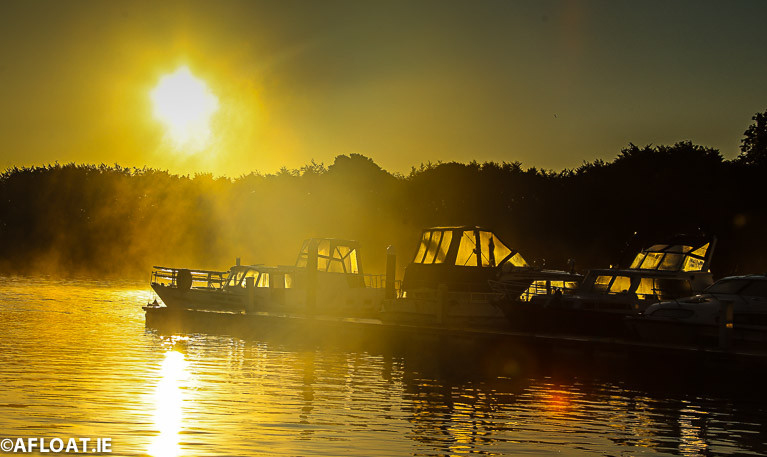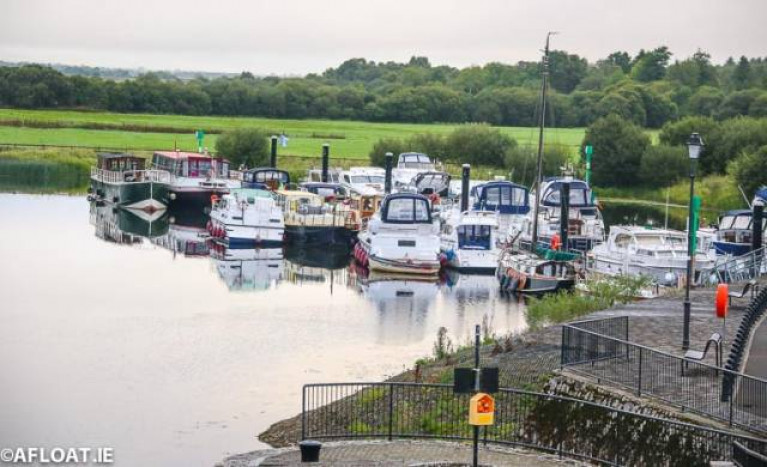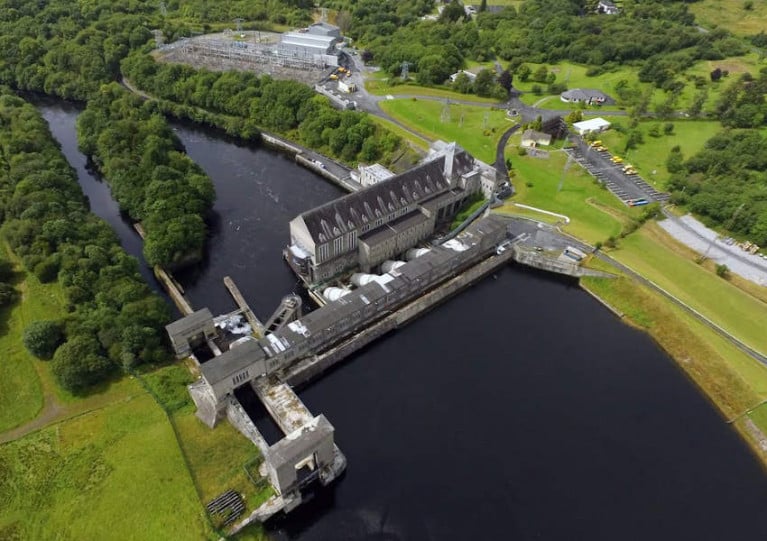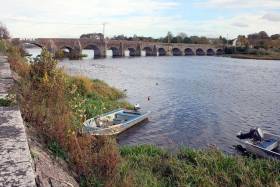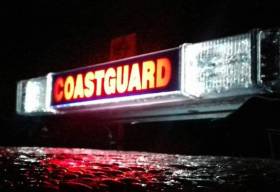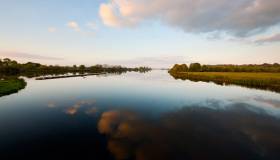Displaying items by tag: River Shannon
Remote and “tranquil” cabin cruiser moorings, kayak trails, canal walks and greenways form part of a €76.5 million tourism plan for the river Shannon published today.
As Times.ie reports today, the ten-year masterplan is the first such “whole river” approach to the entire Shannon region, according to Minister for Tourism Catherine Martin and Minister for Local Government and Heritage Darragh O’Brien.
The 360km waterway is the longest river in Ireland and Britain, and runs through ten counties – all of which are involved in the strategy drawn up by Fáilte Ireland and Waterways Ireland.
Prone to periodic flooding, the river also has untapped potential as an international and national tourism destination, according to Fáilte Ireland which plans to invest 2.1 million euro in the waterway this year.
As Afloat reported yesterday, the masterplan identifies seven priority areas, and three key themes within Fáilte Ireland’s “Hidden Heartlands” brand - “The Shannon, Mighty River of Ireland”, “Shannon Journey’s” and “Adventures and The Natural Timeless Shannon”.
Redevelopment of Connaught harbour in Portumna, Go Galway; a “canoe step” for access to Lough Derg; a new cycle and walking trail linking Connaught harbour and the Lough Derg “blueway”; and extra cruise berths in several counties and in Athlone, Co Westmeath are among initial projects allocated for funding.
Fáilte Ireland’s head of product development – activities Fiona Monaghan said that a pilot project to develop “remote” or “tranquillity” moorings for cabin cruisers would focus on three such locations on Lough Derg, three on Lough Ree and three on the upper Shannon.
The plan also involves supporting a number of tourism businesses along the river and the Shannon-Erne waterway.
The entire ten-year plan has been costed at 76.5 million euro, Monaghan said, with a focus on “quality, rather than quantity”, and a sensitive approach to the river’s environment.
Strategic environmental assessments and public consultation have already taken place, she said.
Minister for Tourism Catherine Martin said that “this unique area is highly valued for its special environmental qualities and biodiversity and is home to many unique species, and native flora and fauna”.
“ It will be a haven for on-water and off-water experiences offering a range of ways to be active in nature, in a sustainable manner. The Shannon will invite the visitor to slow down, stay longer and to engage with local communities,” she said.
Martin said the region will be developed as a “model of ecologically sustainable tourism”, with a “leave no trace” code of practice and a “slow travel” approach for visitors.
Other elements of the plan include the development a water-based “activity hub” at Red Bridge (Ballymahon), Co. Longford, due to its proximity to Lough Ree, Ballymahon and the Center Parcs complex.
Ten additional cruiser berths will be developed in Roosky, Co Roscommon, and there will be additional car parking, landscaping, and interpretation of the waterways “industrial heritage”.
Read more on Times.ie here
New Infrastructure for Waterways in €63M Greenways Funding Allocation
Refurbishment of the Longford Canal and the extension of the Grand Canal Greenway from Daingean to Edenderry are two of the projects that will be funded from a €63.5m allocation for greenways in 2021.
Transport Minister Eamon Ryan and Minister of State Hildegarde Naughton today (Monday 9 November) confirmed the funding for a range of greenways across the country.
Minister Ryan said the funding “is the highest single year amount ever allocated to greenways”.
“Indeed, it nearly equals the total amount originally allocated for the four years 2018-2021 (€53m) and shows the commitment of this Government to providing a step-change in the way in which we fund walking and cycling,” he said.
Among the inland waterways projects in the list is the €172,000 refurbishment of the Longford Canal spur of the Royal Canal, with improved infrastructure being provided along its cycleway.
In Co Offaly, €3.1 million has been allocated to fund the extension of the Grand Canal Greenway from Daingean to Edenderry, with another €1.66 million for the stretch between Daingean and Lough Boora, west of Tullamore.
“By the end of next year it will be possible to cycle the greenway the whole way from Edenderry to Lough Boora, over 50km worth of cycleway,” Minister Ryan said.
Minister Naughton added that a new greenway bridge across the River Shannon in Athlone would be funded from a €8.1 million allocation to the Galway-to-Dublin Greenway.
Staycation Trend Proves Boon For Shannon Cruiser Hire Industry
Cruiser hire firms on the River Shannon have experienced a boom in business from ‘staycationers’ as holidays abroad this year were cancelled in droves, according to RTÉ News.
While some operators felt the brunt of coronavirus restrictions in the spring as they lost a lucrative international market, come summer the tide turned and now the industry as a whole says it is enjoying its most successful period in eight years.
Demand has been driven by a hungry domestic market grounded by lockdowns on foreign getaways — with RTÉ News highlighting Banagher in particular at its busiest this month.
And it’s hoped many of those who may be new to a cruising holiday, or other aquatic activities on Ireland’s inland waterways, will be hooked enough to return next season.
?️ It has been a bumper season for the cruiser market on the River Shannon, as people continue to holiday at home during the pandemic. Traffic on the river is up by over 30%, and Waterways Ireland says the new business will help secure jobs. | Read more: https://t.co/oSmOi9XSUV pic.twitter.com/bqV6DZhI4G
— RTÉ News (@rtenews) September 6, 2020
Meanwhile, the Shannon cruising boom has come alongside a rise in incidents involving cruisers getting into difficulty — with Lough Derg RNLI having a particularly busy week.
Most recently the inshore lifeboat Jean Spicer was called to a 36ft cruiser with four on board which ran aground in Youghal Bay on Thursday evening (10 September).
This followed rescues for a 20ft vessel with engine failure at the lough’s northeastern end on Wednesday; a 35ft cruiser aground by the Silver Islands on Monday evening; and a vessel with engine failure near Mountshannon Harbour last Sunday.
Also on Sunday, four people were rescued from a Shannon cruiser that caught fire and sank after difficulties in the Jamestown Canal.
The RNLI has repeated its call for all boat users, many of whom may be new to cruising or boating, to study their charts and stay on the navigation route.
Boaters should also ensure their engines are fully serviced, and that they have sufficient fuel for any journey — while lifejackets must be worn by everyone on board.
Invasive Fish Species Chub Confirmed In Shannon Tributary
Invasive chub have been confirmed in the River Inny in Longford, according to Inland Fisheries Ireland (IFI).
A single fish was caught on rod and line at one of a number of spots where IFI staff recorded possible sightings following reports from members of the public.
Chub (Squalius cephalus) are non-native to Ireland, with the potential to compete with native species for food and space as well as be a carrier of fish diseases and parasites.
The River Inny — a tributary of the Shannon — is the only Irish river in which they have been recorded thus far, and removal operations between 2006 and 2010 were thought to have eradicated the species from the system.
It is not yet clear whether the current chub are linked to the original population or were more recently introduced.
However, the threat of chub spreading through the Shannon system “is of real and pending concern to the biodiversity of Ireland’s biggest catchment”, says the fisheries body.
IFI’s head of research Dr Cathal Gallagher explained: “Ireland’s rivers are ecologically important ecosystems, which support significant recreational fisheries for native and established fish species.
“Non-native fish species threaten these ecosystems and the game and coarse fisheries that they support — potentially in unforeseen ways — and are thus a cause for concern.”
IFI appeals to anglers to protect Ireland’s fisheries by not moving fish between watercourses for any reason and to submit any sightings directly to IFI or on the hotline at 1850 347424 or 1850 FISH24.
Carrickcraft, the leading River Shannon Cruiser-Hire firm, expects to reopen its boat rental business from 20th July and aims to tap into the 'staycation' market as many Irish people are worried about flying abroad this summer due to COVID-19.
'A boat has always been the perfect place to get away from it all, but this year even more so', the firm says.
The firm that operates from bases on the rivers Shannon or Erne has a wide variety of craft available for short or long cruises as Afloat's David O'Brien find out in a three-day cruise through Roscommon in search of the Moone Boy Burger in 2017.
Carrickcraft says 'We will, of course, be practising best hygiene with social distancing at the marinas, and we will endeavour to get you on your way as quickly as possible'.
The July date also sees Cruise Ireland companies Locaboat, Waveline and Linssen boating holidays also reopen on the river.
No Access To Floating Jetty At Shannonbridge Over High Water Levels
Continued high water levels have prompted Waterways Ireland to prohibit access to the floating jetty in Shannonbridge on the Shannon Navigation.
All masters of vessels and users of the inland waterway are advised that lighting to the area has been turned off as the power supply distribution box is currently submerged.
Notice Of Upcoming Ardnacrusha Lock Closure
Waterways Ireland wishes to advise all masters of vessels and water users that the lock at Ardnacrusha power plant on the River Shannon will be closed for six weeks from Monday 20 January to Monday 2 March to facilitate essential maintenance works.
The cross-border body for Ireland’s inland waterways apologises for any inconvenience caused and thanks all vessel owners for their co-operation.
River Shannon Walkway Closed Over Culvert Faults At O’Briensbridge
Waterways Ireland has closed the public footpath running south from O’Briensbridge playground alongside the River Shannon south of Parteen Weir for the foreseeable future, following the discovery of critical failures in two culverts under the path.
Preliminary investigations revealed the need for urgent replacement work on both culverts, the cross-border body for Ireland’s inland waterways says.
It adds that due to the sensitive habitat at the site on the Clare/Limerick border, planning permission is required before the works can go ahead, and this could take up to six months to come through.
“The health and safety risks associated with the two structures are such that it is essential the route is closed and remain so, until after the refurbishment works are completed,” it says.
“Waterways Ireland is aware that this is a popular route for the local community and apologises for any inconvenience caused by this closure.”
Rower ‘Shaken’ After Rescue From Strong Shannon Currents At Killaloe Bridge
BreakingNews.ie reports that a charity rower was left “shaken” after he was rescued from strong currents in the River Shannon at the Killaloe bridge.
Killaloe Coast Guard Unit were tasked at 2.40pm yesterday (Wednesday 25 September) to the scene where the rower had managed to secure his vessel to the navigation markers leading to the bridge.
The rescue team were with the rower within minutes and transferred him to safety while his vessel was taken under tow to the public slipway at Ballina.
BreakingNews.ie says the incident follows a “lucky escape” for three men last month whose lake boat collided with the same bridge.
Waterways Ireland is proposing a permit system for the Shannon Navigation that could see users of Ireland’s longest river face charges for their boats for the first time, as The Irish Times reports.
Users of the Royal and Grand Canals must already pay for annual permits at a cost of €152 per vessel — and now the cross-border body for Ireland’s inland waterways is reviewing its by-laws for the Shannon with a view to extending similar charges there, as well as spot fines for breaches of regulations.
But what might be the biggest hit to Shannon boaters’ budgets may be the end of the current winter mooring regime.
Vessels can currently be moored at public harbours and jetties for five months at a cost of €83 per boat. This would be replaced under the plan with the summer ‘five-day rule’, which itself is under review.
However, the proposals would also bring an end to the current charges for the use of locks. A smartcard system for locks and bridges was rolled out on the Shannon Navigation last autumn.
The Irish Times has more on the story HERE.





























